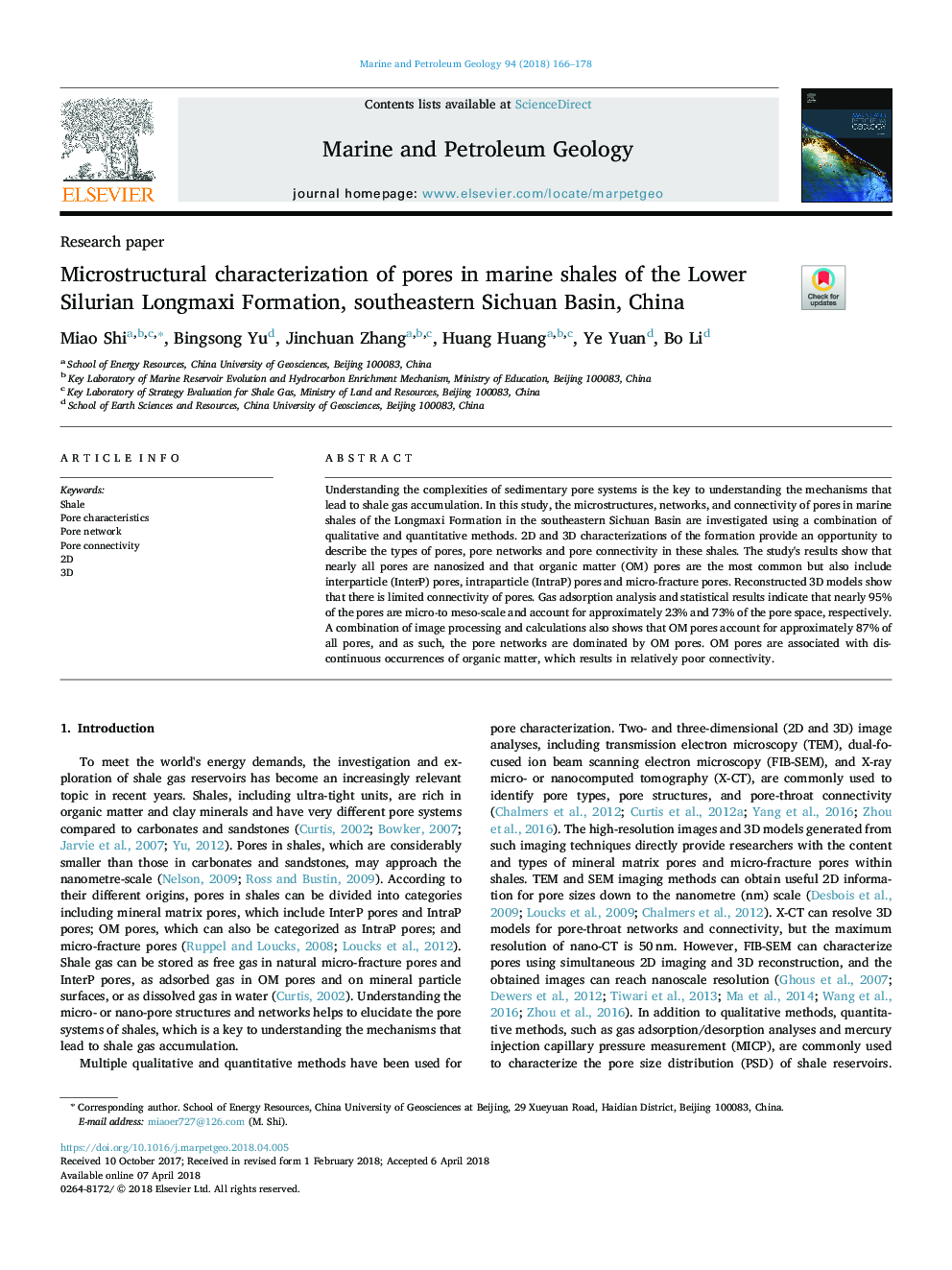| Article ID | Journal | Published Year | Pages | File Type |
|---|---|---|---|---|
| 8909062 | Marine and Petroleum Geology | 2018 | 13 Pages |
Abstract
Understanding the complexities of sedimentary pore systems is the key to understanding the mechanisms that lead to shale gas accumulation. In this study, the microstructures, networks, and connectivity of pores in marine shales of the Longmaxi Formation in the southeastern Sichuan Basin are investigated using a combination of qualitative and quantitative methods. 2D and 3D characterizations of the formation provide an opportunity to describe the types of pores, pore networks and pore connectivity in these shales. The study's results show that nearly all pores are nanosized and that organic matter (OM) pores are the most common but also include interparticle (InterP) pores, intraparticle (IntraP) pores and micro-fracture pores. Reconstructed 3D models show that there is limited connectivity of pores. Gas adsorption analysis and statistical results indicate that nearly 95% of the pores are micro-to meso-scale and account for approximately 23% and 73% of the pore space, respectively. A combination of image processing and calculations also shows that OM pores account for approximately 87% of all pores, and as such, the pore networks are dominated by OM pores. OM pores are associated with discontinuous occurrences of organic matter, which results in relatively poor connectivity.
Related Topics
Physical Sciences and Engineering
Earth and Planetary Sciences
Economic Geology
Authors
Miao Shi, Bingsong Yu, Jinchuan Zhang, Huang Huang, Ye Yuan, Bo Li,
